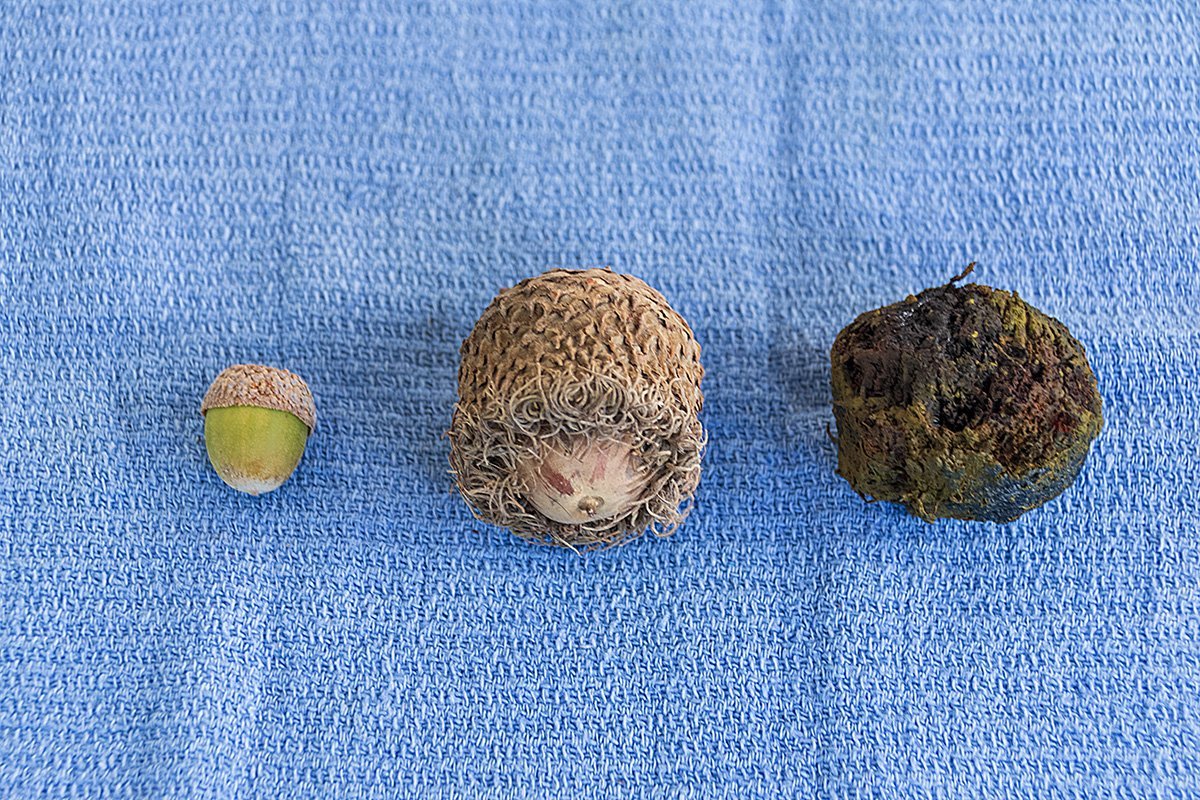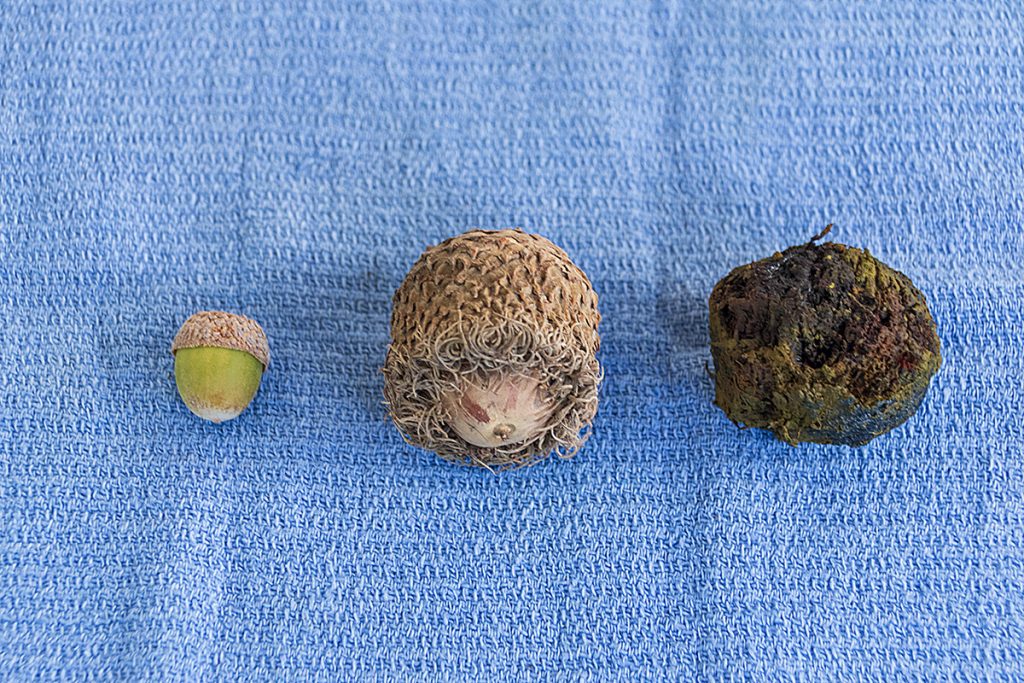The bur oak, sometimes also spelled burr, is a member of the white oak family of trees. They are native to the eastern and central United States and grow as far west as the foothills of the Rockies.
The bur oak is an extremely long-lived tree. It can live up to 3-400 years, with some specimens surpassing 400 years. For instance, there is a bur oak located in Sioux City, Iowa that is called the Council Oak. It is so named because Lewis and Clark, of the famed expedition, held a council with Native Americans underneath the tree. In 1806 the tree was already estimated to be at least 150 years old.
They typically grow to around 80′ tall with an 80′ spread. They can grow over 100′ tall in good growing conditions. They are a slow-growing tree, with reported growth rates of around 1′ per year. They provide abundant shade when planted in yards and urban areas. They produce acorns that are much larger than typical white oak acorns. They are also called mossy-cup oak because the huge acorns are contained within a cup that has a moss-like fringe.
The bur oak is a popular ornamental shade tree in urban areas not only because they spread wide to provide ample shade but also because they are resistant to fungal and insect attacks, drought, and air pollution.
Food For Wildlife
The large acorns produced by this tree are food for ducks, turkeys, deer, elk, and moose. They are also used by many other mammals in the forest. They are spread primarily by rodents and birds, who frequently carry the acorns and stash them for eating later. The acorns are so large they don’t disperse far from the tree when they fall. Acorns contain large amounts of protein, carbohydrates, and fats. These are essential for wildlife to survive the long, cold winter months. They also contain the minerals calcium, phosphorus, and potassium, and the vitamin niacin. Each of these is needed by animals for survival. These acorns being from a white oak tree, the acorns they produce are more favored by deer and other animals as more palatable than red oak acorns, which tend to be more bitter due to the higher tannin levels contained in the nuts.
Bur Oak Wood
Bur oak is used the same as other white oak trees. It is used for furniture, cabinets, fence posts, cross ties, and a host of other applications. The wood is very heavy and hard, making it a great choice for these applications.
If you spot one of these huge acorns in the woods look up at the tree. It is very likely that it was here during all the historical events that have happened in our country since its founding. That makes this one extraordinary tree, and the huge acorns are a source of food for so many woodland animals.

